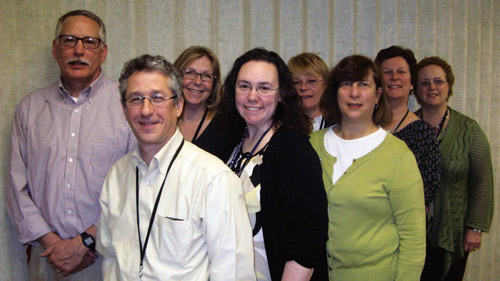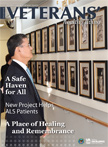New Project Helps ALS Patients
In 2008, Veteran John Antonizio was referred to Erinn Raimondi in the Providence VA Medical Center’s Occupational Therapy Department with a diagnosis of ALS, also known as Lou Gehrig’s disease. From that moment on, Erinn and John worked together, forging a path into the unknown for equipment, therapy protocols, and resources. Months passed before John made his way to the Spinal Cord Injury (SCI) Clinic, where he was provided with interdisciplinary care. "There were so many questions left unanswered," Raimondi recalls, "but at least now there were more hands carving the path."
ALS, or amyotrophic lateral sclerosis, is a progressive neurodegenerative disease affecting nerve cells in the brain and the spinal cord. There is no known cure. Patients diagnosed with ALS must face the grim reality that they will lose their ability to function physically while remaining cognitively intact. Although patients with ALS and their families will face many struggles, thanks to a recently formed "ALS System of Care" redesign, ALS patients now have an improved and specialized method of receiving care.
"Before starting this project, there was no consistent, standardized process in place at the Providence VAMC to help Veterans with ALS— both on the healthcare side as well as the benefits side," said Raimondi, leader of the redesign project. Each Veteran painstakingly carved his or her own path through the system to get pieces of equipment necessary for their care."

The ALS System of Care redesign team, from left to right: William Luderer, PT, Stephen Mernoff, MD, Marie Sullivan, LICSW, Erinn Raimondi, OTR/L, Laurie Wilson, NP, Ellen Tragar, PT, Diane Blier, NP, and Maureen Hebert, MSW
But the redesign project has changed all that. The first three phases of the project resulted in shorter wait times for a patient’s initial visit to the SCI/ALS clinic. Clinical documentation was vastly improved when a clinician "toolkit" addressing equipment needs, requirements, and equipment return policies was created. Raimondi said, "By developing the toolkit, we provided pertinent information to not only give patients and their families help, but also give them something they can hold on to every step of the way."
The project is currently in its final phase—completing a comprehensive patient resource guide that was the brainchild of William (Bill) Szeliga, another Veteran with ALS. With his help gathering the information, the guide is nearly complete and includes the names and contact information for all of the key ALS team members, a list of all of the services the VA can provide on an as-needed basis, and additional information regarding equipment, grants, and additional support systems.
The plan is for this project to serve as a VA best practice that is another "gold standard of care" for the VA.
ALS Redesign System of Care | Memorial Wall | Safe Haven | Palliative Care

















